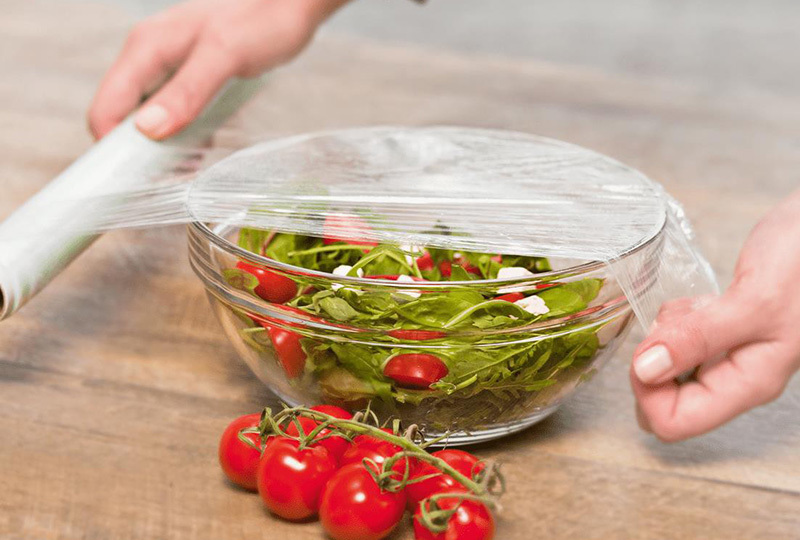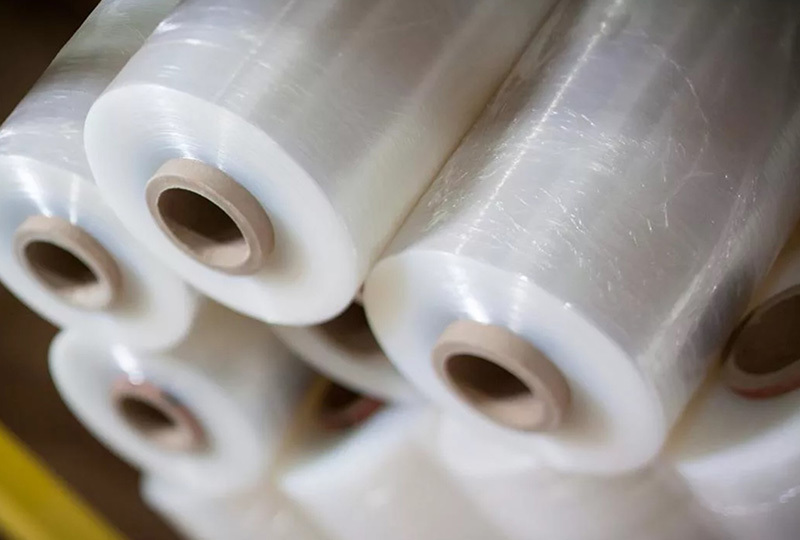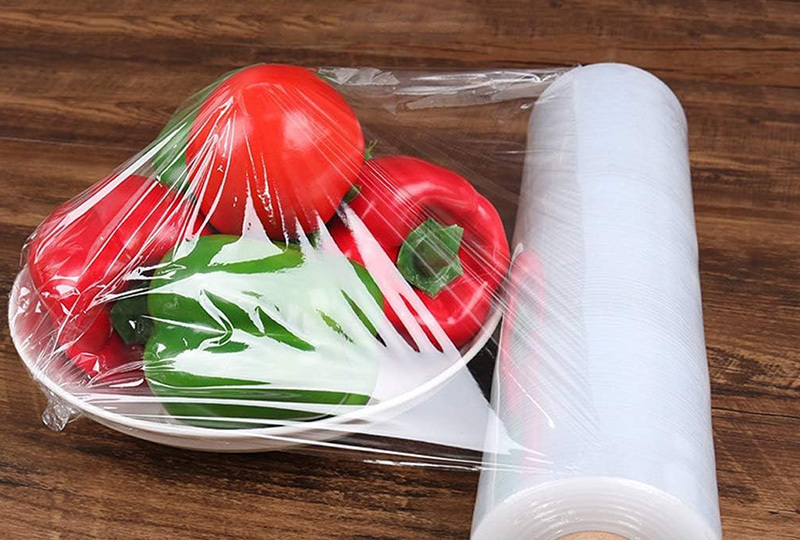The Role of Quality in Cling Film Manufacturing: What You Should Know
Release time:
Jul 04,2025
The Role of Quality in Cling Film Manufacturing: What You Should Know When it comes to food storage, cling film is an indispensable tool in the kitchen. However, not all cling films are created equal. In this article, we will explore the significance of quality in cling film manufacturing, discussing the various factors that contribute to its effectiveness, safety, and overall performance. Underst
The Role of Quality in Cling Film Manufacturing: What You Should Know
When it comes to food storage, cling film is an indispensable tool in the kitchen. However, not all cling films are created equal. In this article, we will explore the significance of quality in cling film manufacturing, discussing the various factors that contribute to its effectiveness, safety, and overall performance. Understanding these elements will help consumers make informed choices about the cling film they use in their households.
Table of Contents
- Introduction to Cling Film
- Materials Used in Cling Film Manufacturing
- The Manufacturing Process of Cling Film
- Quality Standards in Cling Film Production
- Testing Procedures for Cling Film Quality
- Sustainability Practices in Cling Film Manufacturing
- How to Choose Quality Cling Film
- Conclusion
- Frequently Asked Questions (FAQs)
Introduction to Cling Film
Cling film, also known as plastic wrap, is a thin plastic film used to cover food items and containers, helping to preserve freshness and prevent contamination. The importance of high-quality cling film cannot be overstated, as it directly affects the safety and longevity of the food we consume. Understanding the manufacturing process and the materials involved can empower consumers and businesses alike to make better choices.
Materials Used in Cling Film Manufacturing
Polyvinyl Chloride (PVC)
One common material used in cling film manufacturing is polyvinyl chloride (PVC). PVC cling film is known for its excellent cling properties, making it a popular choice for food packaging. However, there are concerns regarding the safety of PVC when exposed to heat, as it can release harmful chemicals. Therefore, consumers should carefully consider their choice of cling film based on its material composition.
Low-Density Polyethylene (LDPE)
Low-density polyethylene (LDPE) is another widely used material for cling film. LDPE is considered safer than PVC and is often used in applications where food safety is paramount. It offers good elasticity and clarity, making it suitable for various food storage needs. Moreover, LDPE cling film is generally recyclable, making it a more environmentally friendly option.
Polyethylene Terephthalate (PET)
Polyethylene terephthalate (PET) is a less common but noteworthy material in cling film production. PET cling films are known for their durability and resistance to punctures and tears. These films are often used in commercial settings where high-quality food preservation is essential. Furthermore, PET is fully recyclable, contributing to sustainable practices in the industry.
The Manufacturing Process of Cling Film
Extrusion
The manufacturing of cling film typically begins with the extrusion process. In this stage, raw materials, such as PVC or LDPE pellets, are melted and formed into a continuous film. The extrusion temperature and pressure must be carefully controlled to ensure optimal film properties. A higher-quality cling film will undergo a thorough extrusion process to enhance its performance.
Stretching and Orientation
Once the cling film is extruded, it undergoes stretching and orientation processes. This step is crucial for enhancing the cling properties of the film. By stretching the film in both the machine and transverse directions, manufacturers can create a film that clings effectively to various surfaces, maintaining its integrity during storage.
Coating
To improve the cling film's performance, a coating may be applied during production. This coating can provide additional properties, such as increased opacity or improved tear resistance. Quality manufacturers will ensure that the coating does not affect the safety or usability of the cling film.
Quality Standards in Cling Film Production
Safety Regulations
Cling film manufacturers must comply with various safety regulations set by government bodies. In many countries, cling films are subject to standards that govern the materials used, ensuring they are safe for food contact. For instance, the FDA in the United States has strict guidelines regarding the use of certain materials in food packaging.
International Standards
In addition to local regulations, several international standards, such as ISO 22000, govern food safety management systems. Manufacturers that adhere to these standards demonstrate a commitment to producing safe and high-quality cling film, ensuring that consumers can trust the products they purchase.
Testing Procedures for Cling Film Quality
Cling Strength Testing
To evaluate the effectiveness of cling film, manufacturers conduct cling strength tests. This process measures how well the film adheres to itself and other surfaces, ensuring it provides a reliable seal for food storage. High-quality cling films will typically exhibit superior cling strengths, reducing the risk of food spoilage.
Tensile Strength Testing
Tensile strength testing assesses the film's ability to withstand stretching and pulling without breaking. A high tensile strength indicates a durable cling film that can handle daily use in various kitchen scenarios. Manufacturers should target specific tensile strength thresholds to meet consumer expectations.
Migration Testing
Migration testing evaluates the potential for harmful substances to leach from the cling film into food. This assessment is crucial for consumer safety, ensuring that the cling film does not pose any health risks. High-quality manufacturers regularly test their products for migration to comply with safety standards.
Sustainability Practices in Cling Film Manufacturing
Recyclability and Biodegradability
As consumer awareness of environmental issues grows, the demand for sustainable cling film options has increased. Quality manufacturers are exploring recyclable and biodegradable materials to minimize their environmental footprint. LDPE and PET cling films are often recyclable, while some companies are developing biodegradable alternatives to address waste concerns.
Eco-Friendly Production Processes
Additionally, manufacturers can adopt eco-friendly production processes, such as reducing energy consumption during manufacturing and minimizing waste. Implementing sustainable practices not only benefits the environment but also appeals to an increasingly eco-conscious consumer base.
How to Choose Quality Cling Film
Understanding Labels and Certifications
When selecting cling film, it's essential to understand the labels and certifications associated with the product. Look for cling films that specify their compliance with safety standards, such as FDA approval or ISO certifications. These indicators signal that the product has undergone rigorous testing and meets quality benchmarks.
Reading Reviews and Ratings
Consumer reviews and ratings provide valuable insights into the performance of cling films. Prioritize products with positive feedback regarding their cling effectiveness, durability, and safety. This information can guide your purchasing decisions and help you identify high-quality options.
Price vs. Quality
While price is often an essential factor in purchasing decisions, it shouldn't be the only consideration. Cheaper cling films may compromise on quality, leading to subpar performance. Instead, focus on finding a balance between price and quality, ensuring you invest in cling film that meets your storage needs.
Conclusion
Quality plays a pivotal role in cling film manufacturing, impacting everything from food safety to performance. By understanding the materials, manufacturing processes, and quality standards involved in cling film production, consumers can make informed choices that enhance their food storage practices. Whether you're a home cook or a commercial establishment, prioritizing quality cling film will yield better results and contribute to a safer kitchen environment.
Frequently Asked Questions (FAQs)
1. What is cling film made of?
Cling film is typically made from materials such as polyvinyl chloride (PVC), low-density polyethylene (LDPE), or polyethylene terephthalate (PET).
2. How can I tell if a cling film is safe for food?
Look for cling films that have certifications from safety organizations, such as FDA approval, indicating they are safe for food contact.
3. Can cling film be recycled?
Many cling films made from LDPE and PET are recyclable. Check local recycling guidelines to see if they accept these materials.
4. What is the difference between PVC and LDPE cling film?
PVC cling film offers better cling properties but may pose health risks when exposed to heat, while LDPE cling film is generally considered safer and is often recyclable.
5. How do I choose the right cling film for my needs?
Consider factors such as material safety, cling strength, and durability. Reading consumer reviews and understanding product labels can also help in making a choice.
Related News
What are the characteristics of PVC fresh-keeping film for food preservation
Can PVC plastic wrap be heated in a microwave oven?
What is the difference between PVC cling film and PE cling film
The choice of PVC cling film need to pay attention to what






